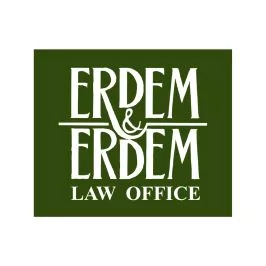Introduction
Establishments, institutions, and businesses that may cause environmental problems via their activities, are obliged to obtain Environmental Impact Assessment ("EIA") Reports, or prepare project description files. The regulation on the EIA ("Regulation") entered into force through its publication in the Official Gazette dated November 25, 2014. Along with the new Regulation, harmonization with the European Union EIA Directive is accomplished (excluding the trans-boundary EIA), and the new provisions that determine the activities requiring an EIA Report are introduced. The Regulation states that necessary amendments are made in order for it to become more comprehensive and practical.
Summary on the Amendments
In conjunction with the Regulation, shopping centers are no longer exempt from the EIA Regulation. The Regulation stipulates that a project description report for shopping centers must be prepared and submitted to the Environment and Urbanization Provincial Directorates. It also regulates that the mass housing projects, which are comprised of 500 and more houses, shall be subject to the EIA Regulation. A real threshold for golfing facilities are also removed.
The conditions regarding the installed capacity of hydroelectric power plant projects operating at 25 MWm is amended. Currently, the said amount is lowered to 10 MWm. While hospitals and dialysis centers are excluded from the scope of the EIA Regulation, railways are included.
Lakes with a capacity of 10,000,000 m3, and barrages or lagoons with a capacity of 5,000,000 m3, are now subject to the EIA Regulation regardless of their intended purpose. Water transmission projects with a capacity of 100,000,000 m3 are also included within the scope of the Regulation. Due to the fact that they are conducted with the purpose of purification of lakes and seas, dredging projects are lowered to a 50,000 m3 range, and included within the scope of the EIA Regulation.
Ceramic facilities with a production activity of 300,000 ton/year and more are added to the scope of the Regulation. Additionally, according to the provision regarding home appliance dyeing, such activities are also included in the Regulation as it relates to increasing tank capacities.
On the other hand, the provision pertaining to the exploration projects of mineral, petroleum, natural gas and etc., is removed from the Regulation. Public investment projects commenced prior to 23.06.1997, and which initiated production or operations as of 29.05.2013, along with the construction and facilities that are required for the execution of these projects, are excluded from the scope of the EIA.
Explanations
The provision regarding definitions is amended, as follows:
Environmental Impact Assessment not Required Decision; means that the Council of Ministers' Decision declaring that realization of the Project is not harmful to the environment after potential negative effects of the project are determined, considering the Projects Subject to Selection and Elimination Criteria, is at an acceptable level in accordance with the legislation and scientific principles as a result of measures to be taken.
Environmental impact assessment process; means the process that starts with the application for the environmental impact assessment, and which covers the construction, operation and post-operation works.
Supervision and control; means all of the works conducted in accordance with the conditions that form the basis of the decision regarding the period following the construction, operation and post-operation works after the "Environmental Impact Assessment not Required" or "Environmental Impact Assessment Positive" determinations have been obtained with respect to the project to be implemented.
Therefore, the new Regulation stipulates that negative effects of projects must be limited to a reasonable level, as a result of sufficient measures to be taken, even though the previous regulation required demonstration of the non-existence of any environmental effect. The expression, "the process that terminates with the decision of the Ministry," is replaced with the expression, "the process that covers the construction, operation and post-operation works." In addition, the term, "regarding the commencement and construction period," is replaced with the term, "regarding the period after construction, operation and post-operation works."
Art. 7 titled, "The Projects Subject to Environmental Impact Assessment," is also amended. Subparagraphs c and ç, stated in the previous form of the Regulation are removed, and in Subparagraph d, the phrase, "projects that fall within the scope of this Regulation, and which have a threshold value; however, those are considered to be out of scope since their values are below the threshold," is replaced with the phrase, "projects that are considered to be out of scope." Therefore, an EIA Report is obligatory for those projects that are listed in Annex-1 - the "EIA Required" projects. As well, if a capacity increase and/or expansion, in relation to the projects falling outside of the scope is planned, those projects, whose new capacities are indicated as the sum of the existing project capacity, and the total of the increased capacity, are equal to, or higher than, the threshold, as listed in Annex-1 – then, an EIA Report must be prepared for those projects.
Art. 9 sets forth the Public Participation Meeting, having a substantial role in the EIA process, is amended as follows: "The Public Participation Meeting is held with the participation of the Ministry-authorized establishments/institutions and the project owner in order to inform the public and receive their opinions and suggestions on the project at a central place and time determined by the Governorate, over which the public who will be most affected by the project may easily attend." Therefore, the new Regulation states that the meeting shall be held in a place that has the most ease for the public to attend.
The first paragraph of Art. 10, titled "Scope and Special Format Determination by the Commission," which is established by the Ministry for the purposes of determining the Special Format for the project and examining the EIA Report to be drafted, stipulates that as regards the EIA Report Special Format prepared by the Ministry, opinions and suggestions of Commission member establishment and institutions, as well as the general public, shall be taken into consideration. If the EIA report is not paid for, nor presented by the institution to the Ministry within the prescribed time, the EIA process shall terminate, rather than the EIA application is being deemed null and void. Likewise, Art.12 stipulates that if the adjustments made to the EIA Report are considered unsatisfactory, instead of the EIA application being nullified, the EIA process shall be terminated. Art. 14 titled "Environmental Impact Assessment Positive or Environmental Impact Assessment Negative Decision," states that the EIA process shall be terminated instead of the EIA application being deemed null and void, unless the Final EIA Report, the undertaking letter indicating "the Final EIA Report and its annexes are undertaken," as well as the notarized signatory circular are presented to the Ministry within five working days. Similarly, the regulation concerning "Application and Examination" sets forth that rather than the EIA application being nullified, the EIA process shall be terminated if the information and documents within the scope of the file bear insufficiencies, and such insufficiencies are not fulfilled within the prescribed time period.
With respect to the new Regulation introduced by Art. 15 titled, "Projects Subject to Selection and Elimination Criteria," the projects as indicated in the Annex-2 list, in the event a capacity increase and/or expansion in relation to the projects falling out of the scope is planned, and whose new capacities are indicated as the sum of the existing project capacity, together with the total of the increased capacity as listed in Annex-2, are subject to the selection and elimination criteria. Additionally, paragraphs (c) and (ç) are removed. In paragraph (b), the expression "the projects considered as out of scope" replaces the expression "the projects falling within the scope of the Regulation and having a threshold value, however considered out of scope since their values are below the threshold."
The New Regulation includes Art. 24 titled, "Extraordinary Situations and Special Provisions," which sets forth that the method to be applied to the EIA process concerning the planned capacity increase and/or expansion of the projects with "EIA Positive" or "EIA Not Required" decisions shall be determined by the Ministry.
Art. 19 titled, "Termination of Practices Incompatible with the Regulation," abolished the provision concerning the limitation of the non-recurring extension of time to be granted by the Ministry/Governorate for a maximum of ninety-days for the fulfillment of the undertakings in the project description file if they are not fulfilled, the new Regulation does not prescribe such time limitation.
Conclusion
The new Regulation on the EIA, which entered into force through its publication in the Official Gazette dated November 25, 2014, regulates the principles and procedures regarding EIA Reports or project description files that will mandatorily be obtained by the establishments, institutions and businesses, which may give rise to environmental problems via their activities, a number of amendments are introduced by the new Regulation with the capacity of affecting the practice.
Article of December 2014
The content of this article is intended to provide a general guide to the subject matter. Specialist advice should be sought about your specific circumstances.

